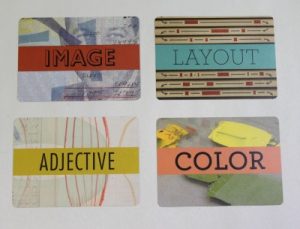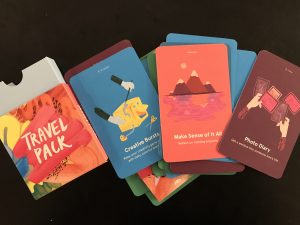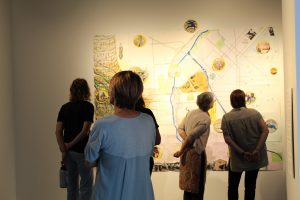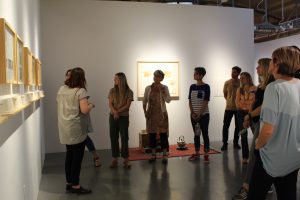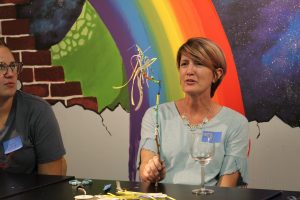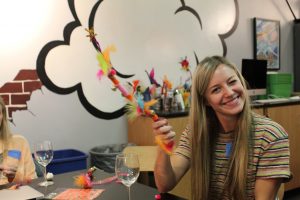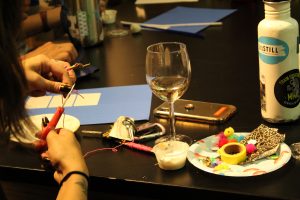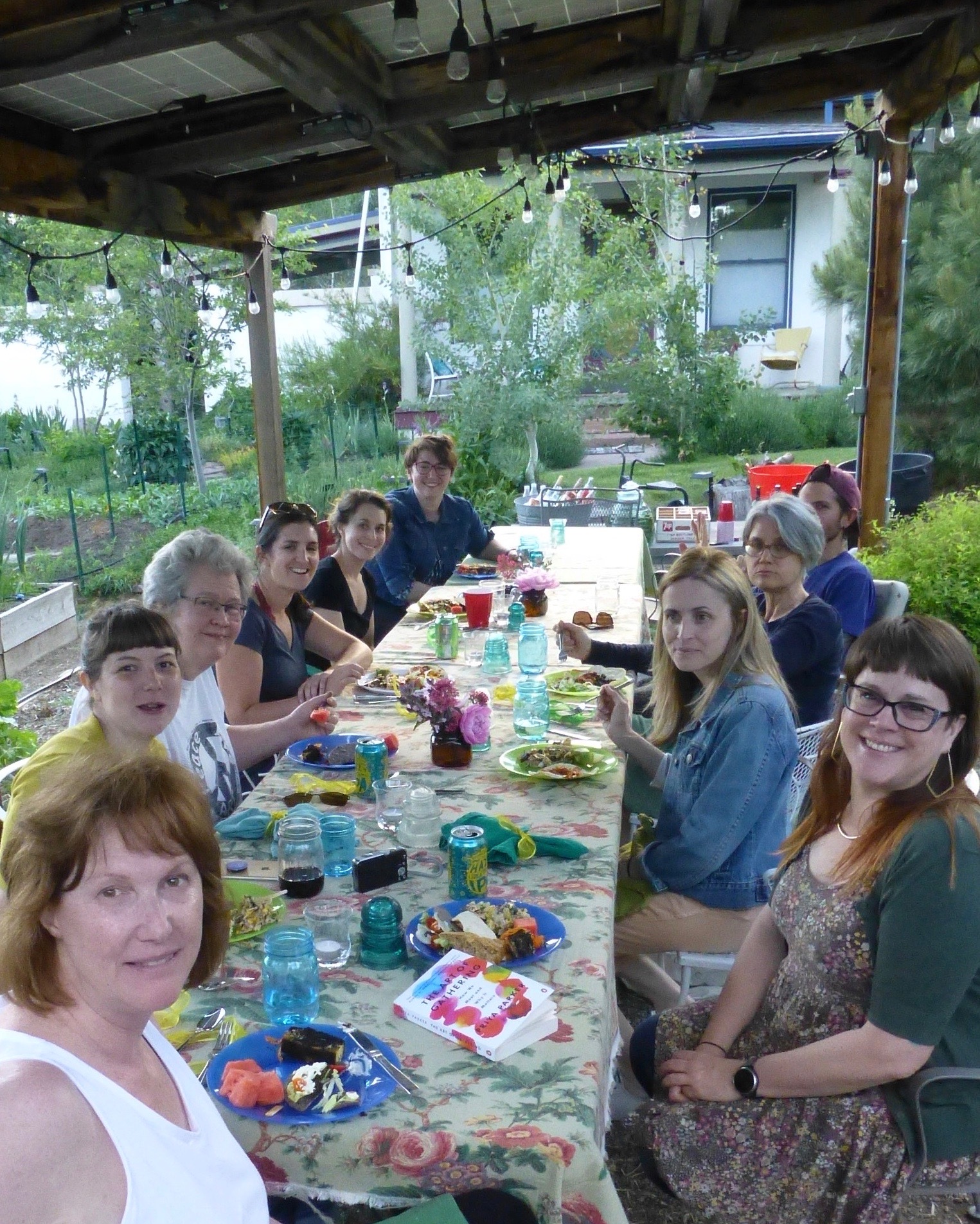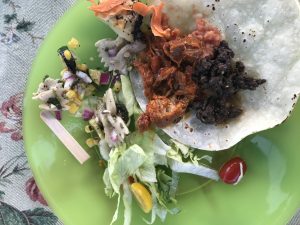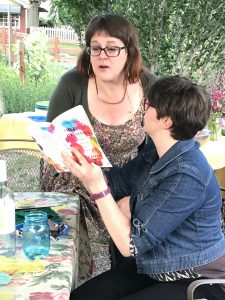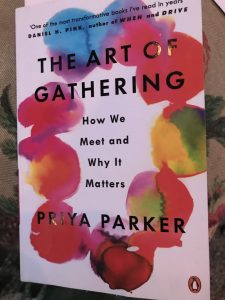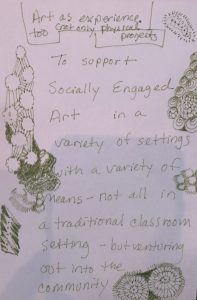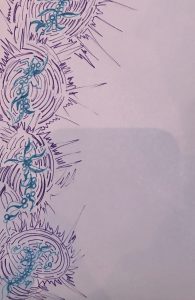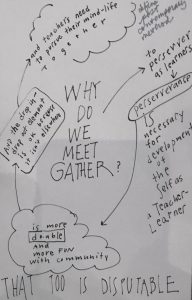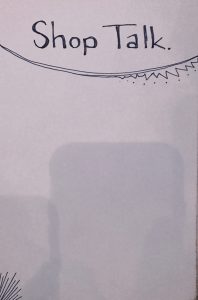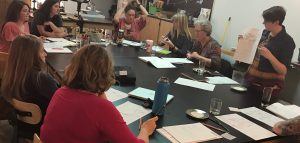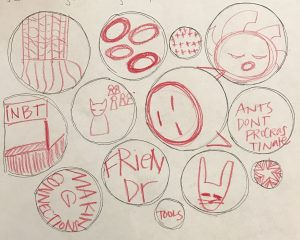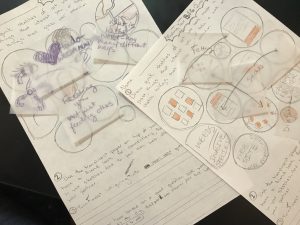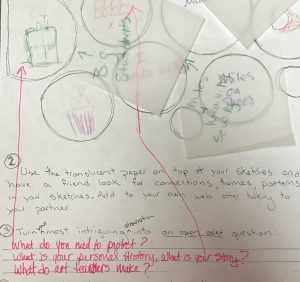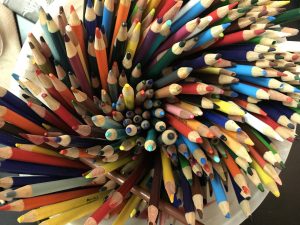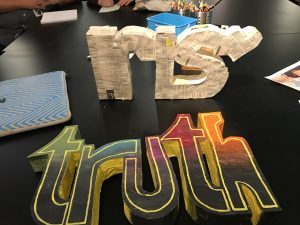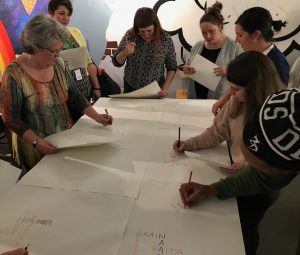
Hooshing
Tonight, we picked up a thread that Rachael started a while ago. Remember curating the refrigerator? Katie lead us back into the art of J. Morgan Puett, a self proclaimed Master of Entanglement. We watched videos, talked, and prepared for a Scramble Scrabble Dinner.


Mildred’s Lane is Puett’s creative space in Pennsylvania where people gather to critically engage with every aspect of life, e.g. arranging chairs, cleaning toilets, curating the refrigerator….what Puett calls hooshing. Puett explains, Every aspect of life is a rigorous engagement with the banal…an artful experience. So at Mildred’s Lane, we make that a creatively, charged practice. Being is the practice.
Hoosh (hōōSH), v.
- A practice of conceptually charged arranging, cleaning.
- The stylistic activation and conceptual engagement with one’s environment.
In the Art Assignment video, Sarah Urist Green, reminds us that Puett’s practice comes from the legacy of Fluxus, particularly Alison Knowle’s Make a Salad, a performance piece where the artist takes something insignificant and domestic and elevates it to the realm of art.
This gets at Ellen Dissanayake’s definition of art. People deliberately make something special. She explains, what artists do, in their specialized and often driven way, is an exaggeration of what ordinary people also do, naturally and with enjoyment – transform the ordinary into the extra-ordinary. Remember Ellen? She was the keynote speaker at the CAEA conference a couple of years ago.
Talking it Over
What makes a salad as a salad different from a salad as art?
How is Mildred’s Lane different than just having a nice house?
Intention.
I’ve been thinking about hospitality….art as hospitality.
Yea. My work really is about gathering people together….the art is the intentionality of the gathering. I’m intentionally creating spaces for people to gather. I know I’ve mentioned this book before, The Art of Gathering: How we Meet and Why it Matters, Pyra Parker
This is what teachers do everyday.
How is the art of the dinner different from my mother giving dinner parties? How is it different from pre-feminist work?
Again. Intentionality.
Not just intentionality. It’s also different because this is about cultures of power. We use the same forms as the 1950’s housewife, but we do the decision making. The power comes out of that act of deciding to do it or not doing. You do it as a specific stance, an act. Not because it is expected of your role.
Like Cupcake Feminism?
Like teaching? 1950’s teaching vs. 2019 teaching as a conceptual art practice?
Teaching as a social practice.
Even though I believe this why do I fall back on art as defined by what European and American males did in the last century?
My art practice is my teaching. It’s my painting too. Erica’s does this amazing gardening and flower business. The other Erica’s gathering people for intentional creative work. Why does it have to be one or the other? Who makes that rule? It’s all. There needs to be a space where everything can belong.
Like you’re at a party and someone alludes to your teaching and says, Are you still making your art?
Uh. Yea.
But we default in our minds to the practices of the European art salons and the New York galleries. Why?
Sigh.
Challenge the Dish!
In order to plan a scramble scrabble dinner, you need to follow this Algorithm (sort of). The important thing is to challenge the dish by being outrageous and not falling back on old cooking knowledge. The more naive and impulsive recipes, the better.
Each person writes their full name and then writes food or food processes from the letters in their name.

Then a large paper or cloth is set on a table and everyone writes one of their words.
Everyone moves in one direction to a new word and fits in one of their words like the game of scrabble.
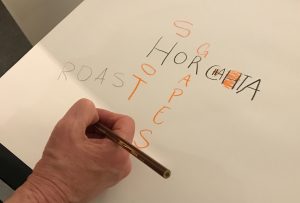
The movement keeps happening until the table is full of little scrabble letter puzzles.
Everyone goes back to their original word and uses the word groupings to create a recipe. They write the recipe on the paper and draw a picture of it.
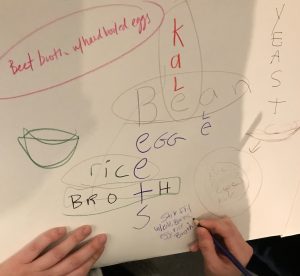
Everyone moves around the table adding more and more ideas for new recipes at each scrabble letter picture.
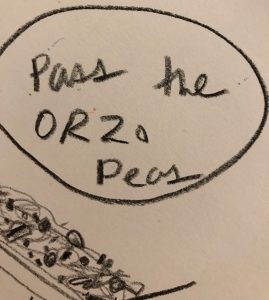
People choose the recipe they want to cook for the dinner.
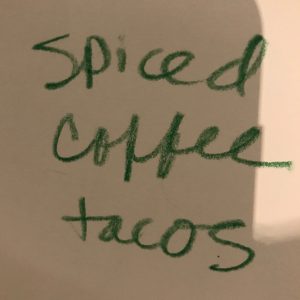
A final menu is assembled.

A dinner potluck date is set.
We will have our Scramble Scrabble dinner on the second week of June. (probably in Erica’s flower garden). If you would like to scramble scrabble with someone to create your own recipe, do. Then join us June 12 at 5:30. We will send out the location soon.

